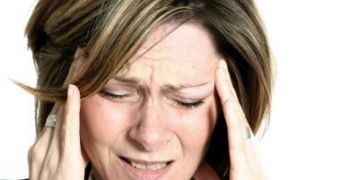More than 35 million Americans suffering from some form of headache could benefit from a new therapy, based on electric impulses directed straight to the brain. They are to be delivered via a microscopic implant that stimulates the nervous cells directly. According to the clinical trial results published by researchers at the University of California, San Francisco and the National Hospital for Neurology and Neurosurgery in London, patients reported an 80 to 95 percent decrease in pain after receiving the treatment.
Scientists expressed great optimism and confidence in the fact that, over the next few years, they would be able to devise optimized devices to alienate severe headaches in patients suffering from chronic migraines. "Preventive approaches like these will completely change the landscape of headache treatment," said lead author of the study, Peter J. Goadsby, MD, PhD, neurologist and director of the UCSF Headache Center. According to the scientist, the device, called a bion, will have roughly the same size as a match and will be implanted in the occipital nerve at the back of patients' necks. The bion will be powered by a rechargeable electrode and will transmit electrical impulses to the nerves when turned on.
Doctors say that the device will have a wireless remote control, which allows it to function only when needed. Up to this point, researchers working on this project were unable to find any side-effects to the bion and say that patients will be fine even if they leave the implant on for longer periods of time. In fact, after 4 months of continuous use, patients who requested the device to be shut down reported that their pain worsened by about 20 percent. In those who stuck with the experiment, the pain alleviated by up to 90-95 percent.
The applications for the bion are extensive. Arthritis patients, as well as people with chronic headaches and migraines could benefit from a means of diverting the large amounts of pain they are currently vulnerable to. "The treatment of migraine and other chronic headache pain can be a considerable challenge to physicians. Not all patients can tolerate the appropriate medicines, and the side effects leave patients and doctors in a difficult position," Goadsby concluded.

 14 DAY TRIAL //
14 DAY TRIAL //